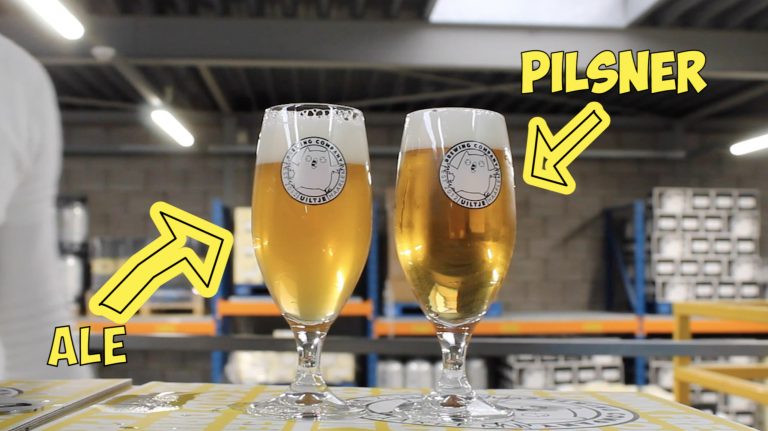Throughout our blog series, we have been focused largely on the topic of IPAs so we thought this week it would be good to focus on another beer style, the Pilsner. We’ll delve into the history of how the Pilsner came to be, and how it became so popular around the world, and finally how it compares to a pale ale.
The invention of the pilsner
So first of all, how did the Pilsner come to be? It all began with a citizen’s ‘beer protest’ in the Czech city of Pilsen, who were not happy with the quality of their beer. A Bavarian brewer, Josef Groll, was brought in and with the help of builder/architect Martin Stelzer, they were commissioned to build a Burger brauerei- which translates as a citizen’s brewery- and brew a new beer. Stelzer hadn’t built a brewery before so spent some time travelling around Europe to carry out research – he ended up building the brewery near the Radbuza river, which enabled easier access to aquifers which held soft and mineral free water. Groll meanwhile made the use of new malting techniques-British maltsters had been perfecting paler malts- and with the development of yeast technology and access to local hops, he was in an ideal position to develop a great new beer style. The result emerged in 1842, a clear ‘golden’ coloured beer that proved to be an instant hit, aptly named the Pilsner after the town in which it was born.
From Pilsen and beyond
From Pilsen in the Czech Republic, the now popular Pilsner soon made its way to other corners of the world. Neighbouring areas of Pilsen that enjoyed the same soft water and access to hops were soon brewing their own Pilsen beers and the beer style soon proved popular throughout Bavaria too. As railroads were built across Europe and refrigeration technology developed which made lagering easier, this proved to be a catalyst for the spread of the Pilsner. The 19th Century also saw mass immigration to the New World, so German immigrants took their recipes (and yeasts) in order to be able to continue to brew their Pilsners, where it soon proved to be a popular beer style too!
Pale ale vs pilsner
So what’s the difference between a pilsner and a pale ale? Perhaps the most distinguishable difference between the two beer styles is that pale ales tend to be more bitter, maltier (and more hoppy) than its pilsner counterpart. Pilsners on the other hand tend to have a cleaner and crisper taste than pale ales. Brewing wise, they also use different yeast strains. Without over simplifying it, with a Pilsner “what you see is what you get”- although of course quality does vary between brands and brewers will pride themselves on brewing a great pilsner as there is nothing to hide behind. Here in the Netherlands, Pilsner is still the most popular type of beer to be consumed- something that we’re trying to change with our own scrumptious beers of course! In fact, two of our most popular beers are Trackdown and the Dikke Lul 3 Bier, both of which are pale ales that we offer year round. So what do you prefer, a clean crisp pilsner or a juicy pale ale? If you need inspiration for a lovely pale ale, then be sure to check out our website for more info!
